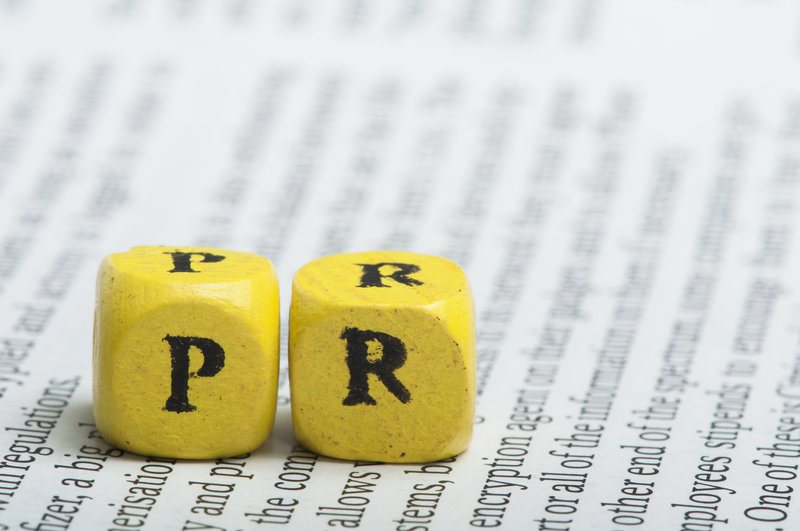The impact of a PR crisis is like a shot heard ‘round the world. What used to take a matter of weeks, months, or even years to leak out can now be spread through the vast social media network in a matter of minutes and hours. The more prepared companies are for the potential of a crisis, the more able they are to take essential steps to handle the fallout.
Having a crisis management plan in place gives you a go-to manual or guide that you can review when your media coverage goes from golden to murky. If you’ve enlisted the support of a professional PR firm, speak to them about whether they have a crisis management plan in place for your business.
If you’re currently on the DIY public relations track, use the following information to craft a crisis management plan and then carefully review it with key investors, management, and staff.
What Could Go Wrong When You Must Handle A PR Crisis?
Let’s do a quick review of what a PR crisis looks like for the average business owner. We like the 5 broad categories Hubspot uses to define the types of crises you might have to handle over time:
Financial. Financial crises span the gamut from insider trading or embezzlement to mismanagement of funds, plummeting stock value, or the basic inability to pay your vendors’ bill.
Personnel. Whoopsie! Someone in your company (probably someone important) did something they shouldn’t have – lied, cheated, stole, made a racist comment, or participated in some other legal or unethical act.
Organizational. Your organization took advantage of its customers to profit or to glean information that wasn’t yours to glean without permission.
Technological. Usually, this means your servers crashed or are glitching in a way that interferes with customers’ use of your website, software, etc. Once is typically not a big deal; repeat incidences create distrust and a feeling that your company isn’t as stable – or conscientious – as it should be.
Natural. Whew! As this goes to press, we’re all in the midst of a natural crisis: COVID-19. Sheltering-in-place has been brutal for businesses, especially restaurants and coffee shops. This one has had long-term effects. Other times, a brief power outage (PG&E power outages during fire season in California, for example), or a major natural disaster (hurricane Katrina) can prevent digital and brick-and-mortar business and/or communications.
An overarching crisis management plan should address all of the above, putting special emphasis on the ones more apt to affect the way your target markets view your brand.
If those categories don’t resonate with you, consider these definitions of a general scenario you would consider being a PR crisis. These were used in a PR News survey, and the percentages presented in their findings:
- When more departments than my own need to be involved33%
- When it needs to be on the CEO’s radar63%
- When it’s related to a previous issue34%
- When a situation was entirely unexpected43%
- When share count or social visibility reaches a predefined point33%
- When a high-profile press outlet picks it up60%
- When a high-profile influencer gets involved47%
Pull Your Brand Out Of A PR Crisis With These 10 Steps
In our experience, every crisis management can be turned around with the following 10 steps.
Be prepared and proactive
Don’t think of a PR crisis as an “If.” Instead, consider it a “When,” and then pat yourself on the back if you retire before you ever need to implement your plan. Being prepared, most specifically with the creation and implementation of a crisis management plan is essential to your ability to act swiftly, articulately, and in an organized way.
Assess your vulnerabilities
Take a good hard look at the areas where your company seems the most vulnerable and make a list of the potential communications or PR hiccups most likely to affect you.
Align with a PR agency if you haven’t already
This doesn’t mean you need to hire a PR firm. Your business may not be big enough (yet) to benefit from the financial investment. However, PR firms also offer more a la carte services – helping you to organize a big event, to support a product launch, etc. – and these can help you establish a baseline if you need their PR crisis management services in the future.
Identify your crisis management team
Typically, the CEO would head this up, but if the CEO is a part of the scandal, you’ll also want a Plan B. Other members include your in-house PR/marketing spokespeople. If they are currently inexperienced in this realm, work with a local PR firm and invest in some training so they are prepared. If you have legal counsel in place, include them in the crisis management training as well. They need to understand that the boilerplate, “no comment…” looks like “our clients are guilty,” in the public eye.
Train the team
We can’t emphasize this enough. Your stated PR crisis management team must have thorough and ongoing training. It’s not a one-and-done type of thing. The people you select need to have the right skills, knowledge, and reflexes to handle whatever is thrown at them.
Regularly review how to handle a PR crisis with the team
Segueing from the idea of “one and done,” your crisis management plan – and the team you’ve identified to activate it – should be reviewed on an annual basis. Putting it on the shelf and allowing it to collect dust puts you at risk for having an outdated plan and a crisis management team that no longer works for you.
Create a communications template
You’re expected to respond immediately when a crisis occurs, but you want to make sure the team is all on the same page. Thus, it’s a good idea to create communications templates you can implement ASAP in a way that honors your investors’/customers’/followers’ expectations but without giving too much away until you’ve had time to regroup.
Get everyone together ASAP
In addition to your crisis management response team, you need to get all customer-facing team members together. Share what happened, the response plan, what to say and not say, etc. They are also your on-the-ground reporters about what your followers/public are saying across social and general media channels.
Take a short- and long-term view
Is this something that will have an immediate, short-term, and or long-term impact on your business? Your response should be planned accordingly – and viewed with the same lens. Don’t do/say anything that can come back to bite you later on, which can cause a PR crisis aftershock – sometimes more damaging than the initial impact.
Learn from the process
Everyone will learn from the process, and these learnings should be incorporated into your next PR crisis management plan. That said, pay attention to other company/brand crises and watch their response like a hawk. Learning from others – what went well for them and what didn’t – is a smart way to handle your own crisis with greater grace and integrity.
Segal Communications is a professional PR agency that specializes in crisis management. We are happy to help your brand create a relevant PR crisis management plan, or to manage your crisis response. We’re also happy to train your PR response team to help prepare them for all of the future possibilities. Contact us to learn more.




Recent Comments